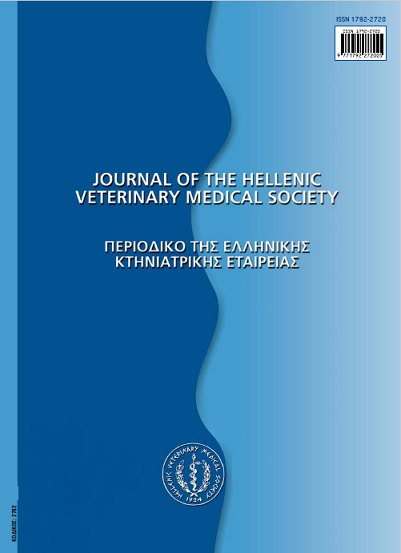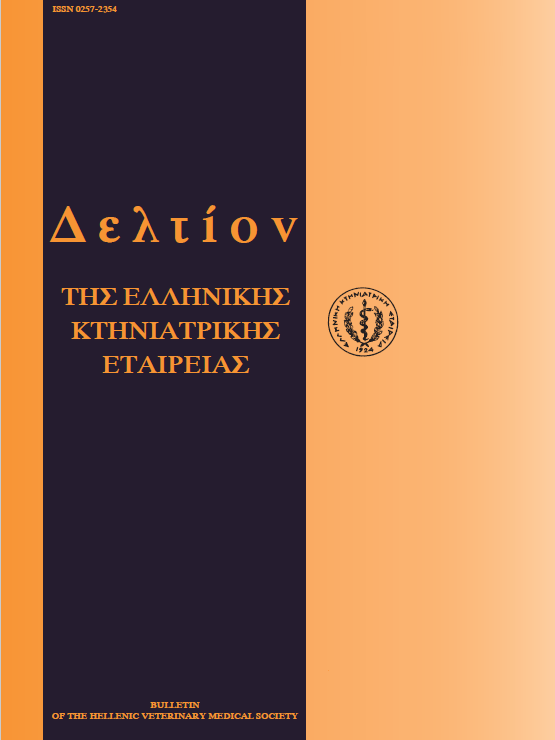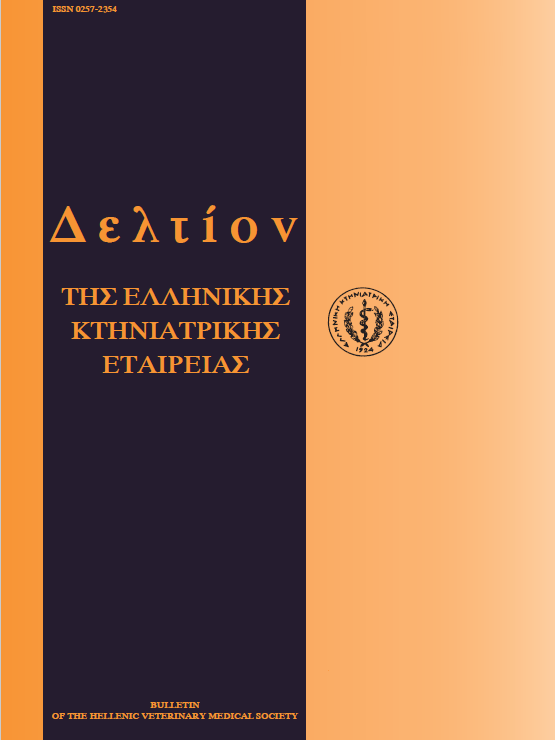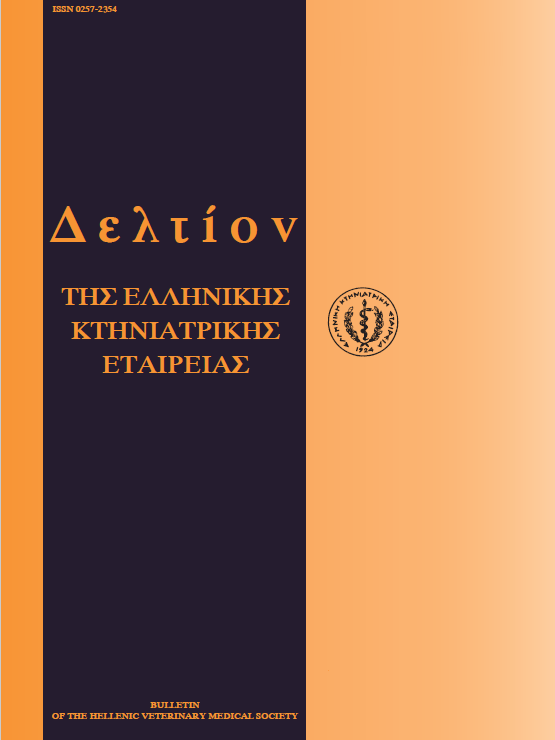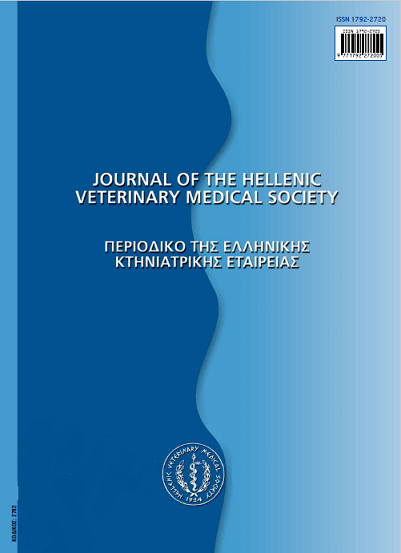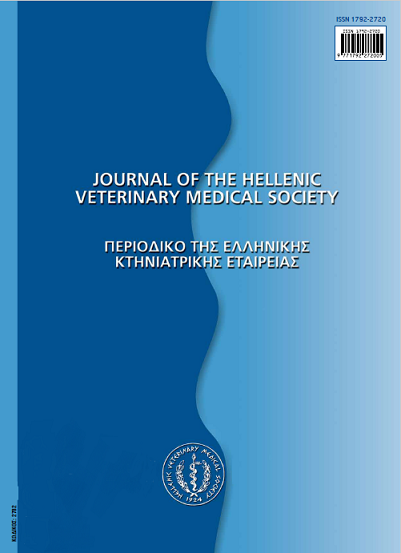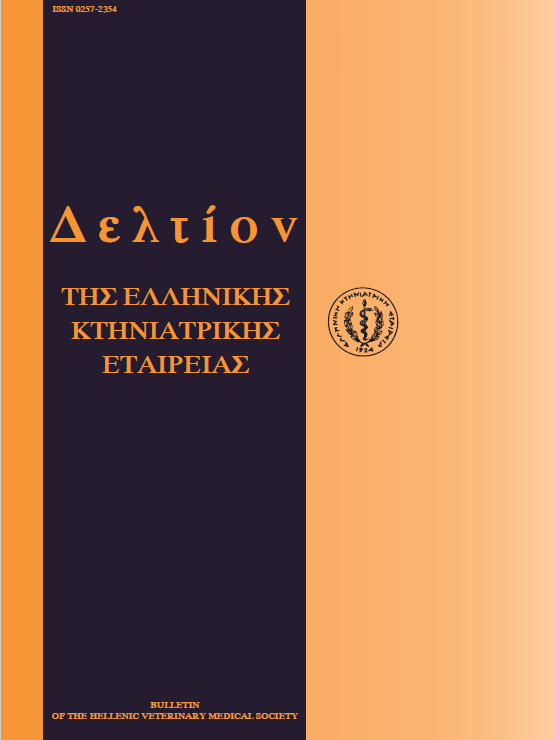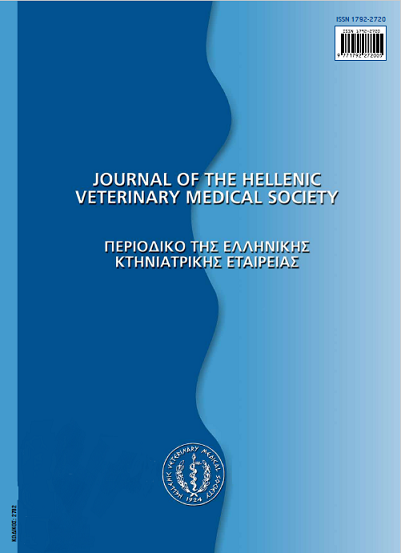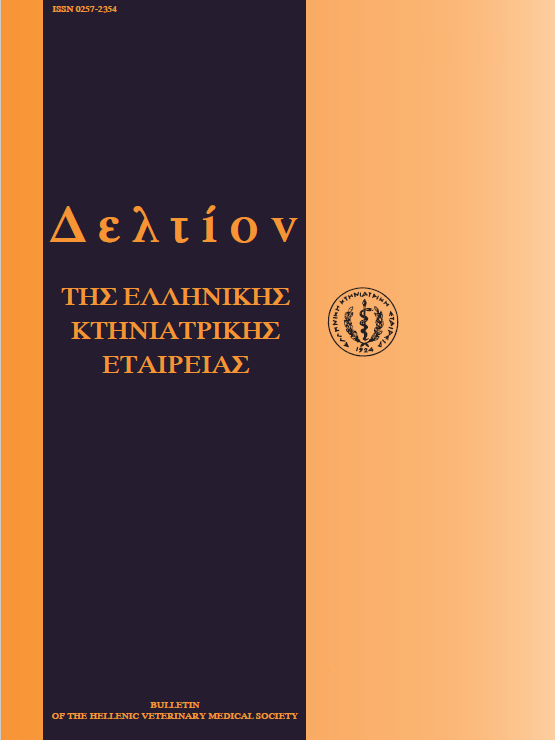Postparturient liver diseases of dairy cattle (Ketosis, fatty liver). I. Etiology and Pathogenesis
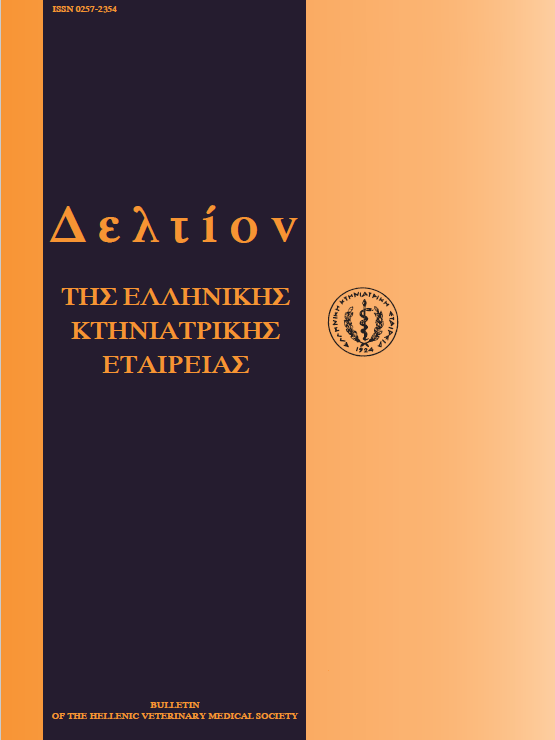
Resumen
Two of the commonest in practice postparturient liver diseases of dairy cows, ketosis and fatty liver, are discussed in this paper. It is not uncommon for both diseases to occur simultaneously, or each to act as a predisposing factor for the other. These diseases share a common etiology and pathogenesis, which are energy imbalance and disruption of normal carbohydrate metabolism during the period of high milk yield. Poor herd management during the dry period and hormonal changes accompanying parturition, have been associated with fat utilization for energy production, which in turn leads to fatty infiltration of the liver and ketosis.
Article Details
- Cómo citar
-
PANOUSIS (Ν. ΠΑΝΟΥΣΗΣ) Ν., & KARATZIAS (Χ. ΚΑΡΑΤΖΙΑΣ) H. (2018). Postparturient liver diseases of dairy cattle (Ketosis, fatty liver). I. Etiology and Pathogenesis. Journal of the Hellenic Veterinary Medical Society, 51(3), 182–187. https://doi.org/10.12681/jhvms.15673
- Número
- Vol. 51 Núm. 3 (2000)
- Sección
- Review Articles

Esta obra está bajo una licencia internacional Creative Commons Atribución-NoComercial 4.0.
Authors who publish with this journal agree to the following terms:
· Authors retain copyright and grant the journal right of first publication with the work simultaneously licensed under a Creative Commons Attribution Non-Commercial License that allows others to share the work with an acknowledgement of the work's authorship and initial publication in this journal.
· Authors are able to enter into separate, additional contractual arrangements for the non-exclusive distribution of the journal's published version of the work (e.g. post it to an institutional repository or publish it in a book), with an acknowledgement of its initial publication in this journal.
· Authors are permitted and encouraged to post their work online (preferably in institutional repositories or on their website) prior to and during the submission process, as it can lead to productive exchanges, as well as earlier and greater citation of published work.



